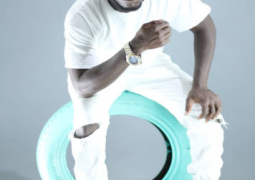On a summer evening in late July 1840, Catholic parents, teachers, and community members congregated in the basement of St. James Church in Lower Manhattan awaiting the address of Rt. Rev. Bishop John Hughes. Interrupted by applause throughout, Hughes stood before the crowd calling for what the largely immigrant Catholic population in the city longed for -- public funding of parochial schools. Their efforts were met with great hostility. Opponents claimed the public was in danger, the Constitution was at risk of subversion, and “union” of the Catholic Church and our government was imminent.
Nearly 175 years later, not unlike that summer night in 1840, students and their families assembled at P.S. 69 in Jackson Heights, Queens rallying to persuade the city to accommodate the Muslim population by closing school on Eid al-Fitr and Eid al-Adha, the two most celebrated holidays in Islam. In response, critics have warned of the “Islamization of New York,” and have accused Mayor Bill de Blasio, who vowed to add the holidays to the school calendar, of succumbing to “Islamic supremacist demands.” Of course, this ignorance is hardly representative of public sentiment on the issue, but even reasonable onlookers may question why religion and public schools are said in the same breath -- is there not a “wall of separation” that stands between church and state?
In reality, New York City public schools have a rich and intertwined history with religion. As a matter of fact, the first public schools in the city were essentially Protestant. A predominantly Protestant population combined with strong anti-Catholic prejudice at the time had resulted in public schools that taught the King James Bible and used textbooks condemning Catholicism. Back then, unlike the rest of the state, city school funds were centrally disbursed by the City Council, with most funds being allocated to the Public School Society, a private nondenominational organization. The Society, despite its unaffiliated status, would fund schools that broadly (and in some cases, more pointedly) taught Protestant values, while “sectarian” schools, including those ran by Catholic organizations, were denied such funds. Angered by what had amounted to public funding of Protestant schools, Catholics, led by Bishop John Hughes (who would later become Archbishop of New York), sought funding for their schools.
In a period where many held deep bias against Catholicism, attempts to secure parochial school funding were met with heavy-handed accusations. Opponents appealed to existing prejudice and suggested these efforts would lead to the “Catholicization” of America. They were able to rationalize such fears by pointing to clergymen and other leaders who had called for Catholic domination in society. Relying on separation of church and state -- an idea that had lay dormant since Thomas Jefferson mentioned it in a letter decades earlier without much fanfare -- they argued that funding religious schools would be contrary to American values and policy.
The fight would last for years, with anti-Catholics scoring victories in some states through “Blaine Amendments” prohibiting direct government aid to religiously affiliated schools, and more generally, with the landmark Supreme Court decision in Everson v. Board of Education, which enshrined the “wall of separation between church and state” in American jurisprudence. Despite this, over time, social and cultural attitudes towards Catholicism would gradually change and the issue would take a backseat in national politics.
It’s hard not to draw parallels between the trials and tribulations of Catholics in 19th century America (well documented in Phillip Hamburger’s Separation of Church and State) and the current quandary of the American Muslim.
Senseless violence committed under the guise of religion has left Islam under significant scrutiny, and understandably so. But legitimate concern has too often morphed into unreasonable suspicion. Schools routinely accommodate religious holidays by closing so long as there is a “secular purpose” for doing so, such as high absenteeism. Critics however, have cast what appears to be a reasonable request as a scheme by Muslims to “Islamize” the nation. This, of course, is hard to envision considering existing constitutional restraints like the “secular purpose” requirement.
Undeterred by reality, opponents have highlighted extremist rhetoric from Muslim clerics abroad advocating Islamic supremacy to validate their bold claims, just as anti-Catholics did in the 19th century. If some clerics call for global Islamic domination, and a school closes on a Muslim holiday, then clearly this must be evidence of extremist goals coming to fruition, right? Of course, this is not the case; one is not necessarily caused by the other. Though logically problematic, this type of group attribution may seem subtle and inconsequential. But upon closer examination it may have more serious implications.
One of the most remarkable aspects of American society is its religious pluralism. Treating Muslims as one single, monolithic group handicaps the benefits of social and civic engagement that have allowed this pluralism to flourish. If they do engage, their actions will be construed as part of a supremacist conspiracy simply because other Muslims abroad have sermonized as much. And if they don’t, lest we forget, their inaction and resulting isolation will be evidence of Islam’s incompatibility with Americanism. This is the conundrum American Muslims face.
Islamic terrorism is, undoubtedly, a serious threat. “Islamization” of our country by American Muslims, who make up less than 1 percent of the population, is not. Though hardly an apples-to-apples comparison, we may be able to find solace in the fate of 19th century Catholic bigotry -- because these clever generalizations are increasingly convoluting public discourse, distracting from important policy issues, and by and large, wasting everyone’s time.
Guest commentary by Khurram Dara a blogger. Follow Khurram Dara on Twitter: www.twitter.com/KhurramDara
“North Eurasia is one of the best examples of religious tolerance and peaceful coexistence of Islam and Christianity. This is a rare thing in today’s world, even in its most liberal parts”.
Nursultan Nazarbayev
EndFragment


